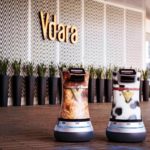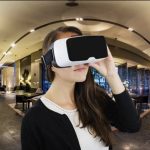Virtual reality has quickly gone from niche to ubiquitous in the travel sector, with professionals in every facet of the industry finding a purpose for the technology.
Two uses stand out for the hospitality industry — attracting guests to a hotel or destination, and keeping them engaged once they’re there. Hotels across the country have already invested in VR, and guests are learning to expect a high-tech experience both before and during their stays. Here are a few ways hotels are already taking advantage of virtual reality to get heads in beds.
Virtual Guests, Real Bookings
Virtual reality can give potential guests a taste of a hotel or destination pre-stay and help them book with confidence. If they can look around the space in advance, they’re less likely to face disappointments when they arrive.
Best Western Hotels & Resorts has the Best Western Virtual Reality Experience, a high-definition, 360-degree look into all of the company’s 2,200 North American properties. Each video gives guests an interactive tour of the hotel’s pool, lobby, fitness center and guest rooms, all in less than two minutes. Before making their reservations, potential guests can examine everything from the rooms to the types of chairs they will be sitting in. Earlier this year, Best Western was recognized by Fast Company magazine as one of the “Top 10 Most Innovative Companies” in the AR/VR category.
Last year, the Hilton Waikiki Beach made a virtual reality tour as part of its app and its website. Using their desktop computers, guests can go on a 360-degree tour and click on “hot spots” to learn more about anything they see. They can also put on VR headsets with their phones and virtually walk through the space.
It isn’t just hotels that are using VR to boost interest. Convention centers and destination marketing organizations have jumped on the bandwagon as well. The Palm Springs Convention Center launched an interactive 3D map and virtual tour through a partnership with Concept3D. Event planners and attendees can explore the whole 245,000 square feet facility, including the integrated 410-room Renaissance Hotel. All of the exhibit halls and outdoor spaces are displayed, and the map has a button so planners can request a proposal while they browse.
The Santa Clara CVB recently partnered with virtual travel platform Xplorit to create an aerial overview map of the city with integrated waypoints and 360-degree exploration of the city’s convention center, hotels, event spaces, and attractions. David Andre, vice president of marketing and communications at the Santa Clara CVB, told Meeting Planners International that VR was the “wave of the future” for promoting a destination or venue. Visitors spend an average of four minutes and 45 seconds on the website, Andre said, and that kind of immersion can easily becoming a booking.
On-Site Entertainment
Some hotels are incorporating VR into the onsite guest experience, keeping guests entertained on-property and making rainy days a little less dull.
In Las Vegas, the MGM Grand Hotel & Casino and Zero Latency launched a multiplayer free-roam VR experience inside the 2,000 square feet Level Up gaming lounge last year. The arena, “Virtual Reality Powered by Zero Latency,” allows up to eight people to play in an interactive digital world together, encouraging collaboration as opposed to isolation. Multiplayer games can include zombie apocalypse stories or physics-based puzzles that are good for families to play together.
“When it comes to playing games, and exploring new worlds in virtual reality, more people means more fun,” Zero Latency CEO Tim Ruse said when the project opened. “Technology can often be isolating but we are determined to continue to design games and experiences that bring people together for mind-blowing VR adventures and to forge real memories that can last a lifetime.”
Other hotels around the country have added VR game rooms to their public spaces. The Aventura Hotel, one of the Loews Hotel at the Universal Orlando, has a virtual reality game room where guests can play with motion tracking controllers for a unique family experience. In Arizona, the Trailblazers recreation center at the Fairmont Scottsdale Princess has a virtual roller coaster with specialized VR chairs.
The Viceroy Group’s Hotel Zetta in San Francisco introduced the VR “cube” installation in the lobby, designed by local upstart Exit Reality. The Exit Reality cube offers a broad range of top-tier content including Google Tilt Brush and Alazan Studio’s Holopoint, so guests can select a VR journey tailored to their interests. Aligning with Hotel Zetta’s focus on creativity, health, and mindfulness, Exit Reality has also curated a selection of custom experiences including Guided Meditation VR from Cubicle Ninjas. The hotel plans to expand the Exit Reality relationship in the future, adding the technology in guest rooms and offering exercise equipment that pairs with the VR system.
There are plenty of ways hotels can incorporate virtual reality into the guest experience, and new ones are coming online constantly. As travel planners and travelers alike become more tech-savvy, VR can help make sure that not only are their expectations met, but exceeded.






